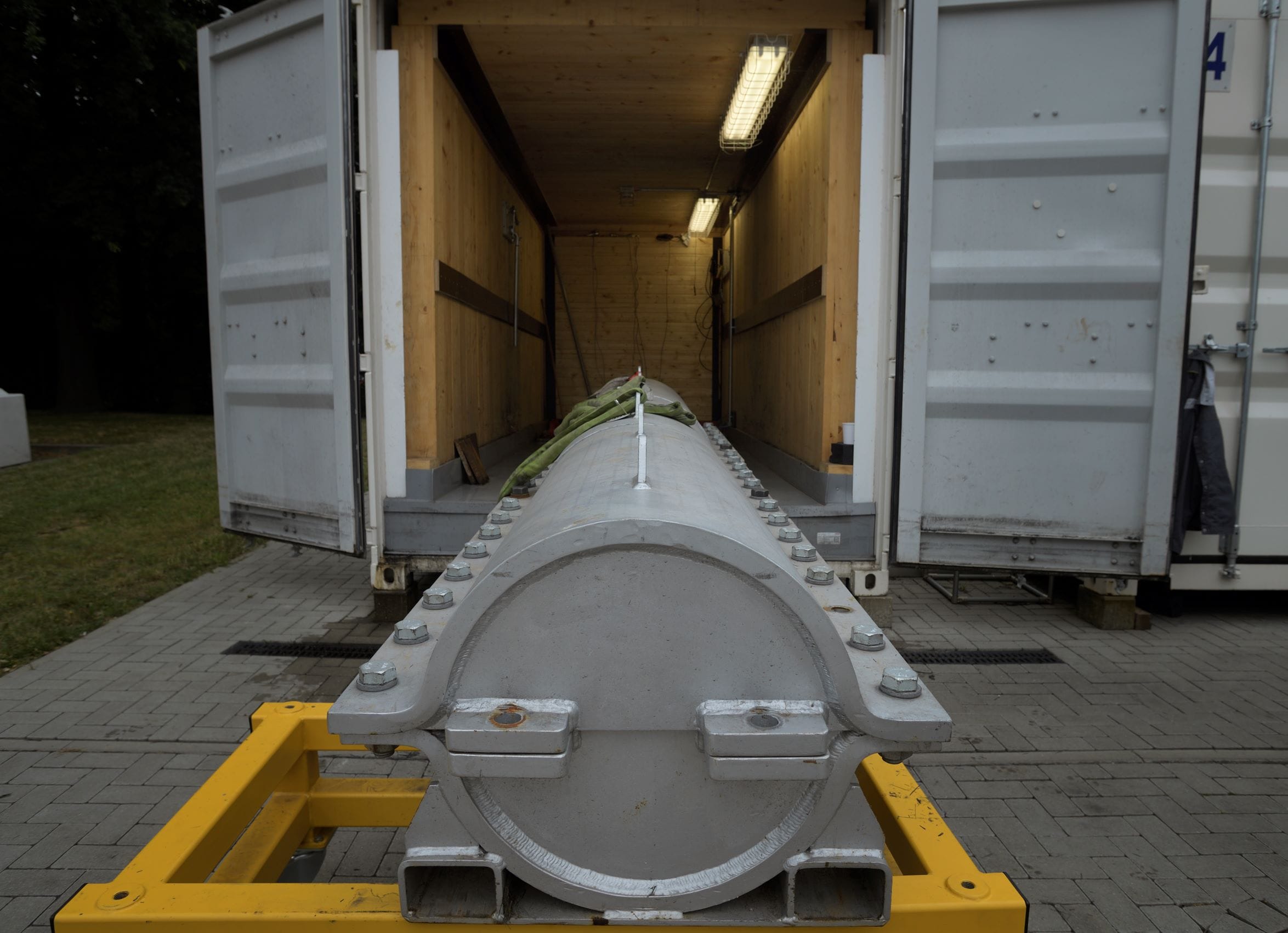
As an emission-free power source, power from Hydrogen fuel cells has the potential to revolutionise the way we travel.
Hydrogen gas produced by industrial processes or by the electrolysis of water can be used in the cell to produce power for vehicles. Water is the only by-product of this process, completely eliminating the particulate emissions and carbon dioxide produced by traditional combustion engines.
But in any pressurised gas scenario, there is risk involved with the storage of the fuel (as there is with any other fuel such as petrol or diesel) which needs to be managed.
For this reason all NPROXX carbon fibre pressure vessels undergo a wide range of stringent certification tests before they are approved to be delivered. These tests ensure that the pressure vessels can reliably and repeatedly used without risk of the tank failing under pressure. These tests include:
- Burst Tests – the vessels are tested at much higher pressures than their nominal working pressure, to ensure that they can withstand over-loading
- Durability Tests – during these tests the cylinder has to withstand the load cycles of multiple service lifetimes combined with introduced damage and extreme climate conditions.
- Fire tests – the vessels are tested in fire and extreme heat, to ensure that they release their contents without explosion
- Crash tests – vessels are put through simulated vehicle crash scenarios, to test their innate strength and resistance to burst
- Gunfire/explosion tests – the pressure vessels are subjected to gun fire and explosions to test their strength and ability to withstand such a scenario.
In all of these tests, the key performance indicator is the ability of the pressure vessel system to obtain the structural integrity or to release its pressurised gas without rupture, and in a way that is as safe as possible.
Industry-leading valve system
The NPROXX valve system is designed to release the gas quickly in the safest possible way if the pressure vessel is exposed to fire. The valve system has both automatic release and manual release options to de-pressurise the tank and eliminate the chance of explosion or rupture.
In addition NPROXX has an onsite materials testing laboratory at its disposal, where there is a controlled area to test and develop innovative hydrogen storage solutions, and investigate the potential of new designs and materials for type 4 pressure vessel applications. This laboratory enables NPROXX to offer customers the unique advantage of onsite research and development of innovative mobile and stationary hydrogen storage solutions.
These are not just limited to the tanks themselves – for example NPROXX has recently developed a patented mounting system for hydrogen tanks on trains, which provides a very high degree of stability for tanks on top of train carriages. This system utilises a unique pressure vessel shape inside a protective case and frame.
Certification and Audits
All hydrogen pressure vessels from NPROXX undergo intensive testing. We work according to the following certifications:
- ISO 9001:2015 Quality Management System
Our pressure vessels can fulfil the following industrial standards:
- ADR: International regulation for transport of dangerous goods
- DIN EN 12245/EN17339: Transportable Gas Cylinder
- EC 79: Hydrogen-powered motor vehicles
- UN ECE R134: Hydrogen fuel cell vehicle safety
- Directive 2014/68/EU (PED): Stationary Gas Cylinder